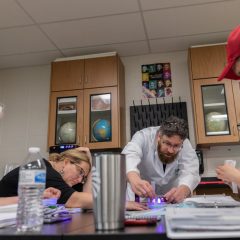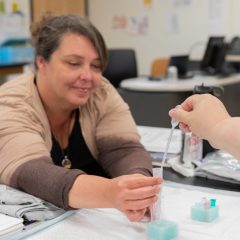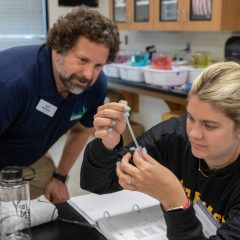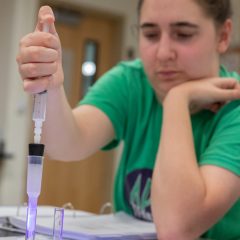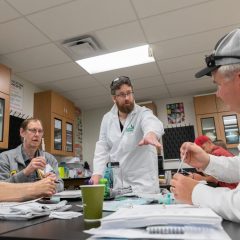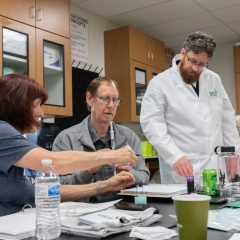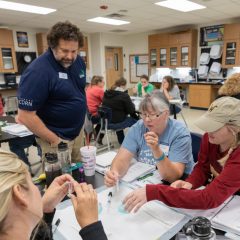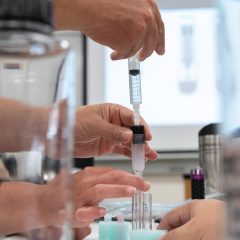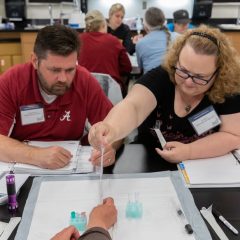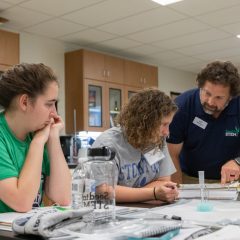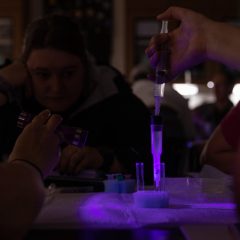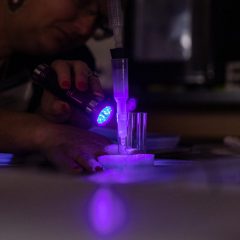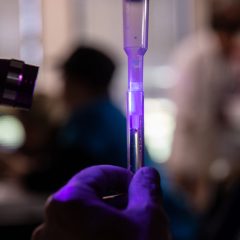Biotechnology
Protein Production Jackpot
Grade Level: High School
One major accomplishment in the corn industry during this century has been the development of Bt Corn. This variety of corn is genetically modified with a gene that produces a highly selective toxin, designed to control for European Corn Borers. How did scientists know this toxin was indeed being produced by the altered corn variety? Scientists take samples of the new plants and purify the protein they are trying to produce in order to confirm their overall results and determine whether they were successful in achieving their overall goals. Purifying proteins from cells is a multi-step process and it is dependent, in part, on the properties of the protein themselves. During this lab students will purify the Green Florescent Protein (GFP), which was previously transformed into a strain of E. coli bacteria during the previous lab, Bacterial Transformation, which is Part 3 of Feeding the World – DNA to the Rescue. They then break down the genetically altered cells to extract the newly created proteins from their freshly grown bacteria cultures.
Teaching the Lesson
About Kansas Corn STEM
Investing in Kansas teachers and students is a priority for the Kansas Corn Commission. We are committed to providing materials and training to support STEM education while fostering an understanding of how corn farming and agriculture fit into our daily lives. Professional development workshops are offered to teachers seeking to expand their knowledge and inquiry-based teaching skills. Workshop participants receive free lab supplies needed for the lessons.
Workshop InfoThis lesson is the work product of the Kansas Corn Commission. Our lessons are written in collaboration with Kansas teachers for use in the classroom. Teachers may copy and share this curriculum. Use of this product for commercial or promotional use is prohibited without express permission of Kansas Corn.
Newsletter Sign Up
Each quarter we release a newsletter written by teachers for teachers. This is an easy way to keep up with what is happening at Kansas Corn STEM.
Subscribe Today!

